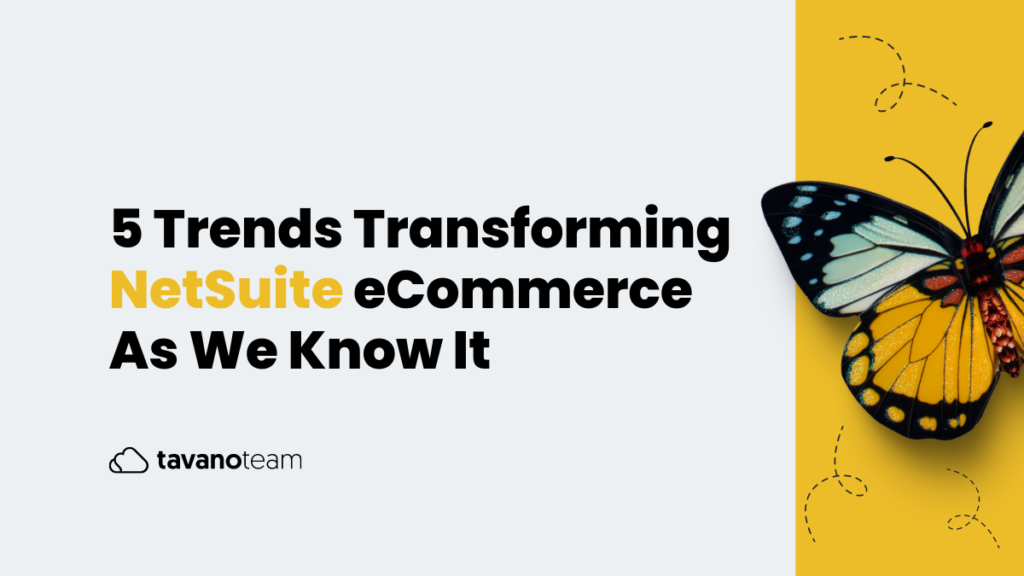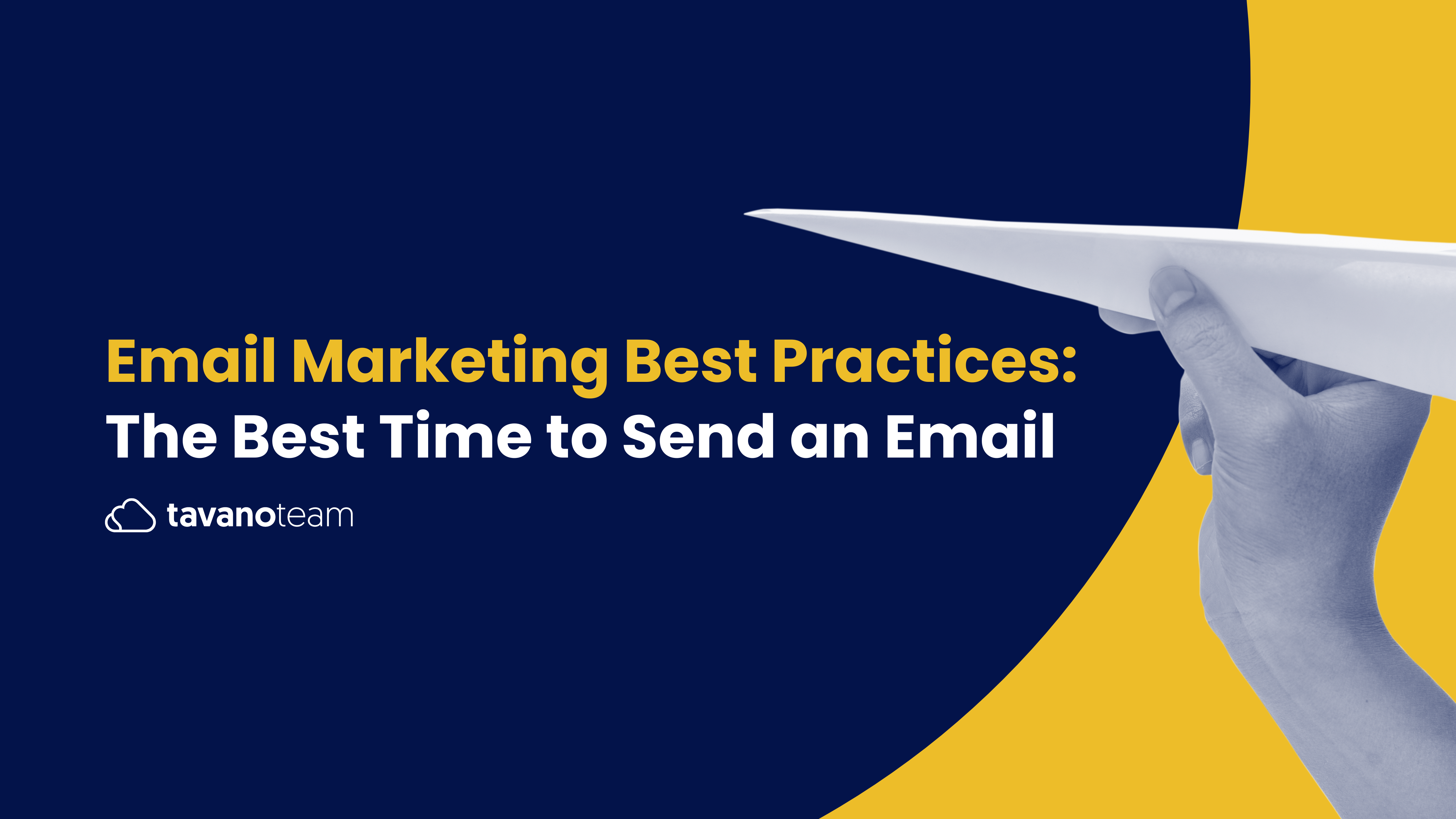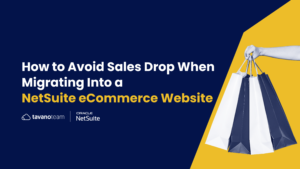“Anticipation is the ultimate power; Losers react, leaders anticipate.” This quote by business strategist Tony Robbins resonates with the work we strive for here at Tavano Team.
We’re on the constant lookout for inspirations that will help us innovate. This business sector can change a lot, very fast, so it’s important to be alert for direction shifts. It’s essential to maintain ourselves one step ahead of the game.
The eCommerce field is a very fast-growing one, with over 26 million eCommerce sites in 2023. Today I will share with you my thoughts on how I feel NetSuite eCommerce will evolve. This is very personal, but it’s a nice exercise to make us aware that changes come fast. We must not only keep up, but we must move faster to make the changes ourselves.
1. AUGMENTED REALITY
Augmented Reality is an eCommerce trend that we see more and more often. Bear in mind, though, that Augmented Reality is different from Virtual Reality (VR). Augmented Reality enhances the world around you and blurs the lines between the online and offline worlds. VR, however, is an entirely immersive experience in the virtual realm. One of the perks of AR is that it gives you the power to digitize physical products and bring them to the digital world.
Wanna Kicks is an app developed by Belarusian startup Wannaby that lets you try shoes using AR. You can see how they will look even before seeing them in person! The app not only lets you try the shoes, but it also takes you directly to the marketplace in case you want to make the purchase right there.
In addition to Wanna Kicks, this startup has similar apps for other vanity products such as nail polish (Wanna Nails) and Jewelry (Wanna Jewelry – In development).
Houzz is probably one of the most exciting furniture commerce websites that I’ve seen so far. Their commerce experience is amazing. Their app uses AR to show you how your new furniture will look in your house. The founders of Houzz, CEO Adi Tatarko, and her husband Alon Cohen, were inspired to launch this website after having trouble finding ideas for remodeling their home.
That was back in 2009. Today, their company is valued at over USD 4 Billion, and they welcome over 40 million users a month. Disclaimer: This video shows a previous version of the app. You can now also try new flooring in the latest version, and the app will calculate how much of it you will need.
2. B2B
B2B is growing very fast. This is mainly because companies are starting to understand that whether it’s B2C or B2B, the end consumer’s approach is not that different. After all, they all become B2H (Business to Human) because, ultimately, a person will be on the other side of the transaction. It’s them who have the final decision power to purchase – or not. The sooner you make the overall experience easy and pleasant for them, the better.
B2B websites, login portals, and marketplaces grew past USD 1.1 trillion for the first time in 2019, and sales are accelerating fast. It’s estimated that they will exceed USD 12 trillion by 2020. That’s more than twice what’s expected for B2C!
3. SUBSCRIPTIONS
Giving in to the subscription model allows for the automation of life as we know it. With the help of personalization, big data, and machine learning, our behavior is becoming more measurable, more predictable, and, therefore, more automated.
There are already services that allow you to automatically receive groceries, personal care items, pet food, and medicine even before you actually realize that you need to buy them.
Subscription services allow us to save time, energy, and resources. All while gaining in efficiency and productivity. These services, as you know, apply to a wide range of products. We can easily find meditation, exercise, diet, reading, music, or film subscription services.
This model’s interesting business side is that a subscription model can definitely help if you’re ever interested in selling your company. Annual Recurring Revenue (ARR) is one of the most valuable metrics in startup acquisitions, and a subscription model is great for displaying it.
4. CHATBOTS AND AI
Chatbots are small computer programs used to simulate the method of human conversation. They interact with real people automatically to help them with their issues and complete their tasks. Used as a customer service tool, they have proven to increase sales, improve communication, and make marketing campaigns more effective. It’s safe to say that bots are here to stay.
There are three main types of Chatbots:
Keyword-based chatbots. They use Artificial Intelligence (AI) to pick and capture the keywords in the user’s query.
Button or menu-based chatbots. These chatbots present users with multiple menus or buttons to choose from. After selecting, the chatbot lists the next set of button options for the user to choose from. This forms a multilevel hierarchical structure of chatbot responses.
Natural Language Processing chatbots. Natural Language Processing chatbots are highly contextual in nature with a data-centric approach to interacting with users.
When powered by Artificial Intelligence, these Virtual Assistant tools can be compelling. They become an assigned sales assistant working one-on-one with your customers 24/7. Chatbots also allow you to measure data and optimize performance.
At Tavano Team, we’ve successfully built chatbots integrated with NetSuite. Trust us; we’ve seen all of their benefits firsthand: Improved UX, data-driven recommendations, automated lead generation and qualification (for services), customer loyalty, and many more.
5. INVISIBLE UX / INVISIBLE INTERFACES
Before saying anything, please note that Invisible UX is not the same as an invisible design. While Invisible Design refers to minimalist and uncluttered design focused on UX, Invisible UX or Invisible Interfaces refer essentially to voice commands.
We’re slowly leaving the screen behind. Voice is increasingly used to give different commands, control devices, and — in the not-so-distant future — we will also use voice to dictate purchases in our everyday lives.
The technology to purchase through voice commands is actually available. And at low costs, at that. But there is still a lot of work to do to make it attractive to the mainstream public. I think, however, that it’s only a matter of time before it picks up.
In fact, according to Google, about 20% of all mobile searches are made over voice, and by 2023 the global smart speaker market was projected to count over 200 million units, a number that will keep increasing in the coming years.
BONUS TRACK
I wanted to add a few words to talk about the Internet of Things (IoT). The IoT is the connection of everyday objects to the Internet, allowing them to receive and send data. This is particularly interesting to explore in the current age of digitalization because it will combine several of the trends that I wrote about today.
Samsung, for example, launched the Family Hub Refrigerator, an amazingly smart fridge from which you not only can access all of your standard apps but is also interconnected to your other devices.
For example, you can use your phone to see what’s inside your fridge, and you can add items to a grocery list (that your fridge can buy online by itself later on).
This is, of course, the epitome of smart living — so much so that this fridge launched thousands of memes. But despite being too far out of reach for most of us, it gives us a clear idea of what the future will bring.
Let us help you innovate with your NetSuite eCommerce. Contact us today!




